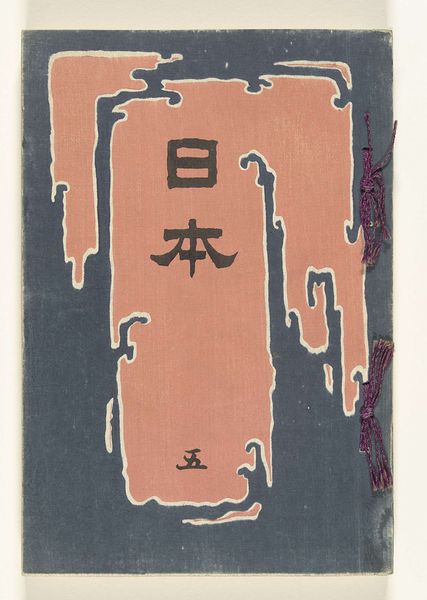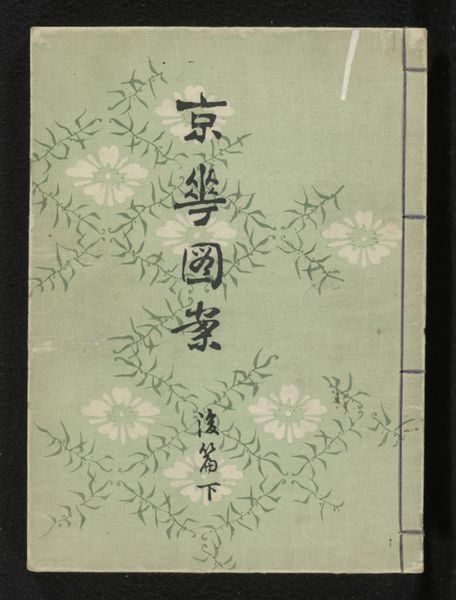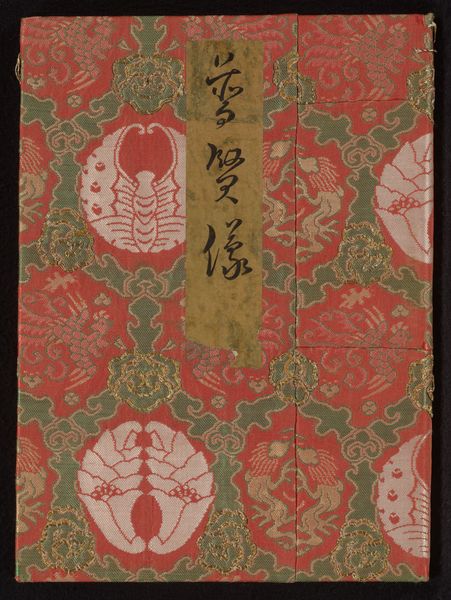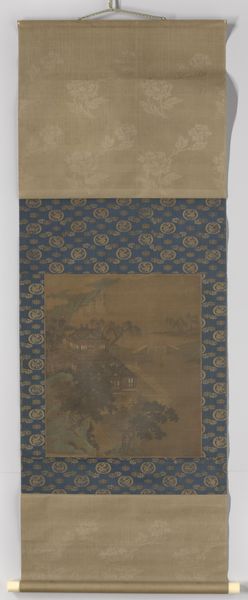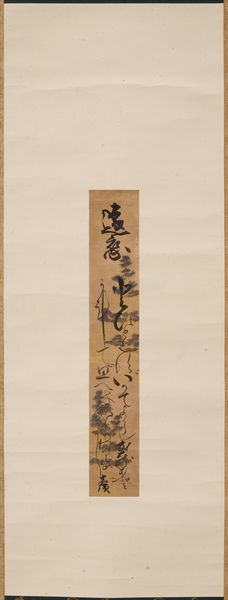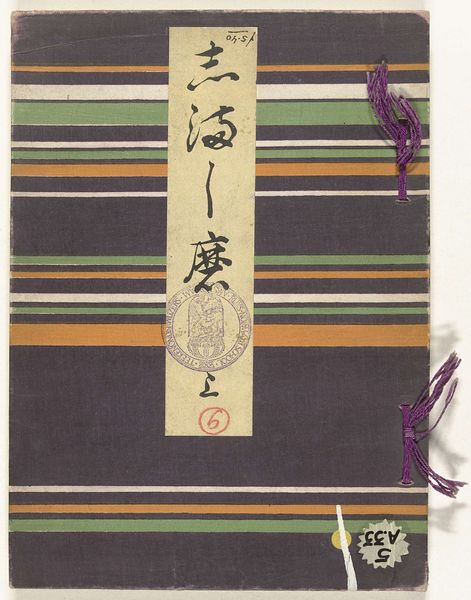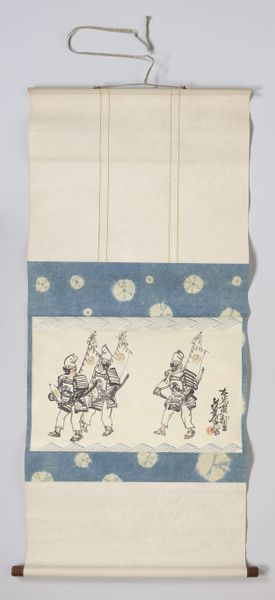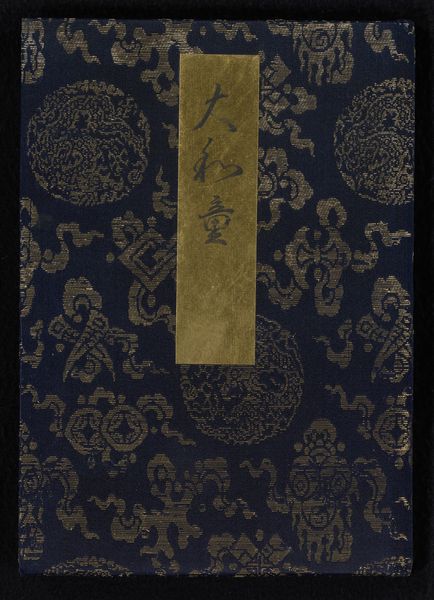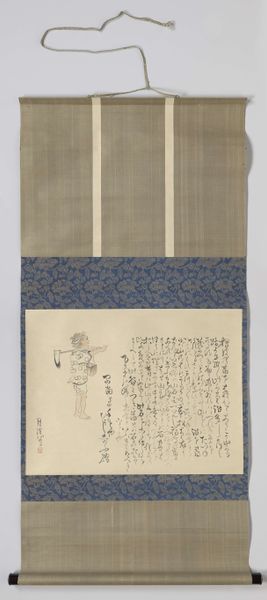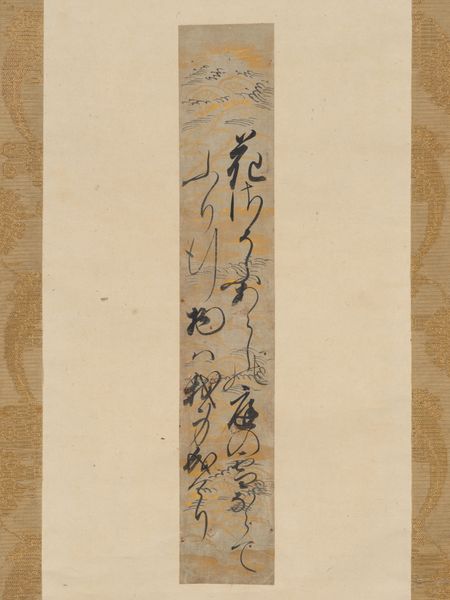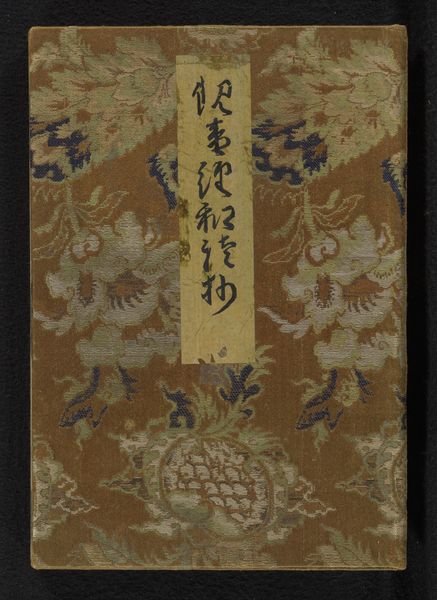
paper, ink
#
asian-art
#
paper
#
ink
#
china
#
calligraphy
Dimensions: Overall (a): 67 1/2 x 14 3/4 in. (171.5 x 37.5 cm) Overall (b): 67 1/2 x 14 3/4 in. (171.5 x 37.5 cm)
Copyright: Public Domain
Curator: This striking piece is a 19th-century Chinese Calligraphy Couplet, a work made with ink on paper currently residing here at the Metropolitan Museum of Art. Editor: I'm immediately struck by its tranquility. The pale backdrop, almost a whisper, with those soft floral punctuations contrasting against the stronger calligraphic marks creates such a serene experience. It really invites introspection. Curator: Introspection through script. Couplets in Chinese calligraphy weren’t mere decoration; they were meant to impart wisdom or express sentiments pertinent to the owner's life or aspirations. The individual characters become emblems, carrying histories of philosophical, even political import. Editor: Right. We need to think about the status of the artist, Lianfang Songfou, as an intellectual expressing themselves. What class structures shaped the production and consumption of this type of artwork, or who might've owned something like this? The floral pattern too feels so subtle it risks becoming invisible—could we consider that alongside any deliberate intent regarding class display? Curator: The paper support, its texture, its capacity to absorb the ink, is an important part of the symbolism in appreciating its cultural context and intended meaning. We observe those aesthetic features deeply embedded in cultural values to unlock those continuities and values. The very choice of specific strokes or character shapes conveys nuanced intentions. Editor: Which would probably have resonated very specifically at the time, inflected by literary trends or philosophical debates... what did the *act* of writing itself represent at the time? I wonder about calligraphy as a bodily performance, linking intellectual cultivation with physical discipline. The embodied aspect needs considering alongside cultural interpretations. Curator: Exactly! It serves as a continuous echo through cultural memory to ancient modes of scholarly practice, the physical trace enacting ancient spiritual links. You can trace a tradition back over centuries through observing even individual strokes and their construction as a series of marks with an intended direction. Editor: And that deliberate construction then also embodies identity. This work invites conversations about belonging, maybe about participating in that historical thread in one’s own present and with a gaze towards the future. Curator: What lingers most is its potent ability to simultaneously speak volumes while whispering. Editor: Leaving space, maybe, for the viewer to become co-author, too. To imbue meaning informed by our own time, as well.
Comments
No comments
Be the first to comment and join the conversation on the ultimate creative platform.

